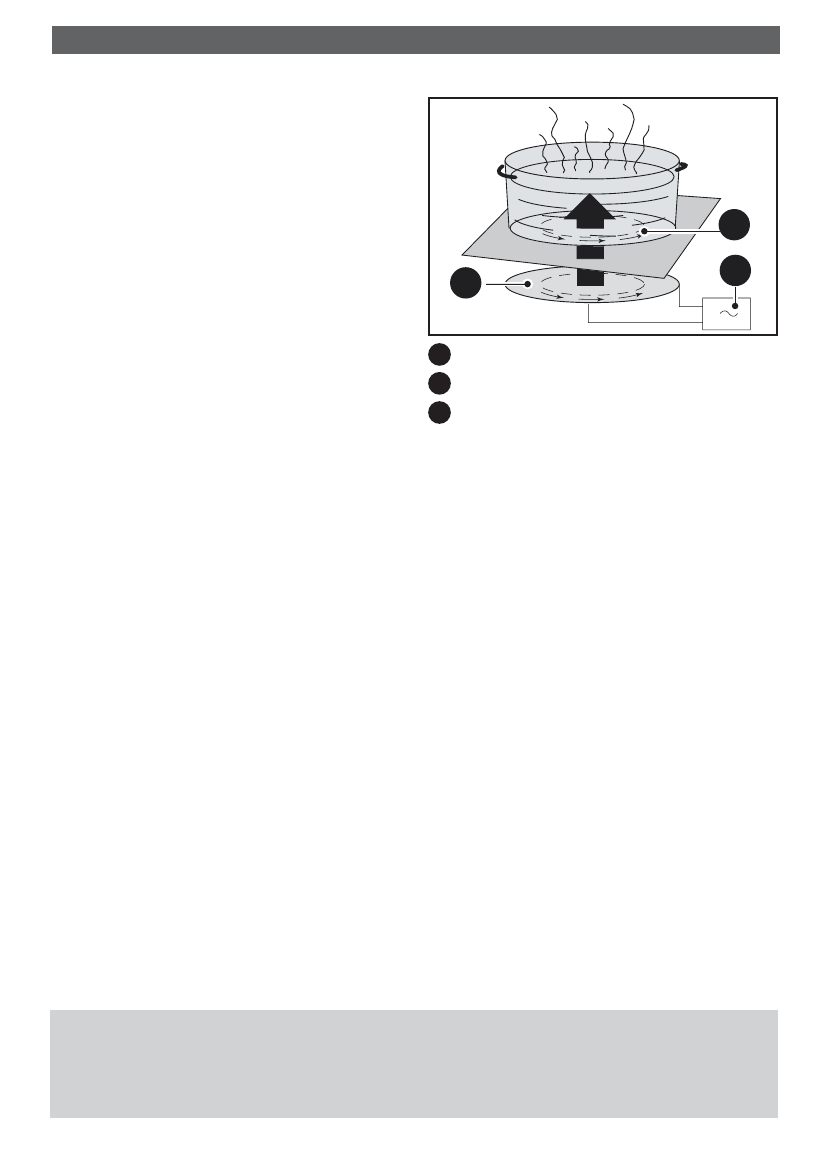
10
The pprinciple oof iinduction
+
-
C
B
A
Induction coil
Inverter
Induced currents
A
B
C
For a proper choice of utensils, please refer to “Utensils for Your Induction”
When using induction elements, some utensils may produce
faint humming sound. This is a normal occurrence - the noise
is a result of vibrations caused by induced currents.
When an induction element - also called: ‘a
heating zone’, or simply: ‘a coil’ - is switched
on, the appropriate utensil is used, and a desi-
red level of heating power selected, the elec-
tronic circuit unit (‘induction generator’ or ‘in-
verter’) powers up the induction coil which
creates a magnetic field. This magnetic field
continuously changes in terms of frequency
and intensity, and this creates induced cur-
rents in the bottom of the utensil and ultimate-
ly results in heat. The heat is transferred di-
rectly to the food being cooked.
Thus, induction heat makes the utensil a di-
rect source of heat, featuring high level of effi-
ciency with extremely low energy loss and un-
paralleled heating level control.
With induction cooking there is very little ‘hea-
ting inertia’. Induction cooking elements do
not incorporate a heat generating element -
unlike convectional electric rings, halogen or
radiant elements etc. - therefore, heat levels
can be changed very quickly.
Energy efficiency for induction is within range
of 90-95%, compared with 55-65% for conven-
tional and radiant element, or 45% - 55% for
gas fueled burners. The energy efficiency
contributes to substantial energy savings,
both beneficial to the owner as well as the en-
vironment.
Induction cooking elements are sensitive to
the utensil type being used :
- if there is no utensil placed on the coil, or if
the utensil is not of induction grade, there will
be no power emitted by the coil;
- if the utensil is placed partially on the coil, or
if it is smaller than the coil, the internal sen-
sors will reduce power to the coil; The Princi-
ple of Induction
- if the utensil is fully removed from the coil,
the power output will be instantaneously redu-
ced to ‘0’, and, eventually, the controls will
turn the element off after a minute, unless the
utensil is returned back onto the coil.
When compared to the other methods of co-
oking, induction cooking has a very low level
of ambient heat, thus makes cooking more
pleasurable, with a reduced need for ventila-
tion.
Finally, the vitroceramic glass as a cooking
surface barely becomes hot and this makes
cleaning much easier.


















